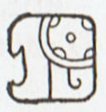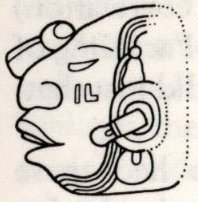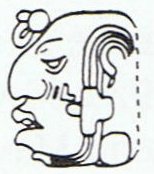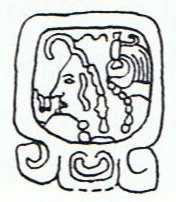|
TRANSLATIONS
Macaw here seems to have a flaming torch in one hand (the right of course) and a water container in the other: 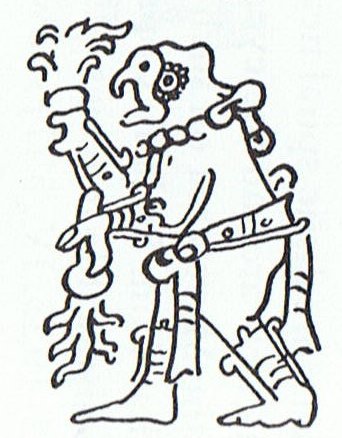 I think his rainbow colours in a way are illustrated - rain followed by sunshine generates colours. Once again: he is standing at the point where the new fire starts. In this picture, though, his black 'eye' (as in a bird mask) is at left and his ring-dotted eye at right. An inversion has occurred. It is now time to try a summary page for Kayab:
In Tahua I have earlier suggested Aa1-13 could depict an ariki with head down and signs of no longer being among us living.
The three little 'balls' in Aa1-14 possibly correspond to the three little black balls in the sign for Jaguar:
"The Mayan glyph for the day called Ix in Yucatec is extremely similar to glyphs from the Mexican codex Fejervary-Mayer for the equivalent day, but has a slightly less conventionalized form, which is clearly the ear of a jaguar.
In the other language groups of Mexico which share the calendar, this is normally the Day of the Jaguar, and, in Kekchi, hix is 'jaguar'. The Quiche name for the equivalent day, Balam, also means 'jaguar'. In any case, it seems that the glyph is a jaguar's ear and means 'jaguar', although it is not so clear whether the original was ix or balam ..." When sun leaves moon takes over, and the black Jaguar in question could very well be a female, I imagine. Sun is connected with sight via an eye symbol, and when sun is gone the ear comes in as the major sense organ. Moon (earth) should therefore be symbolized with a black ear. Ix is the 14th day, certainly a sign of the moon. |
||||||||||||||||||||||||||||||

